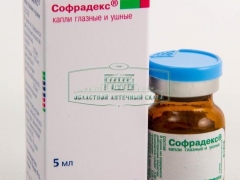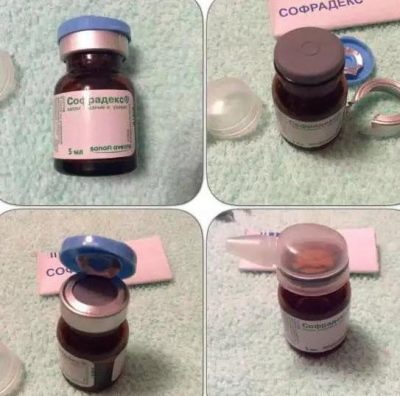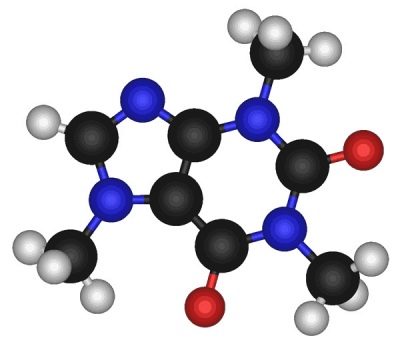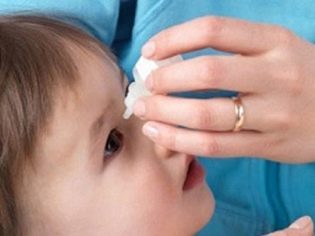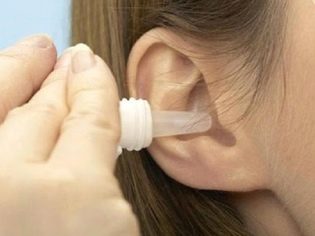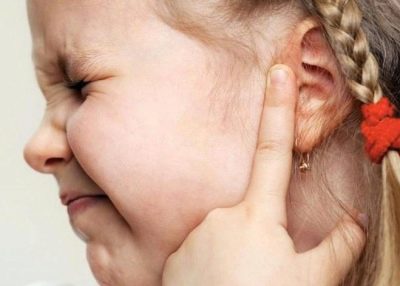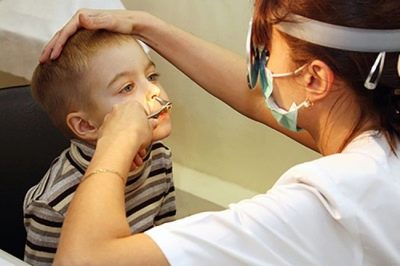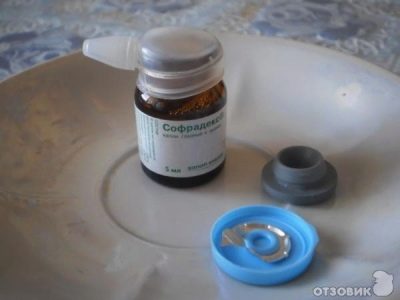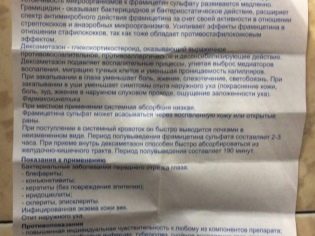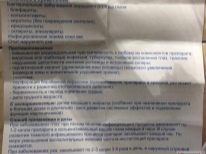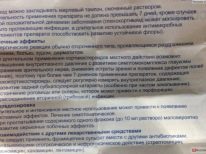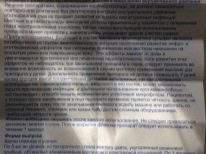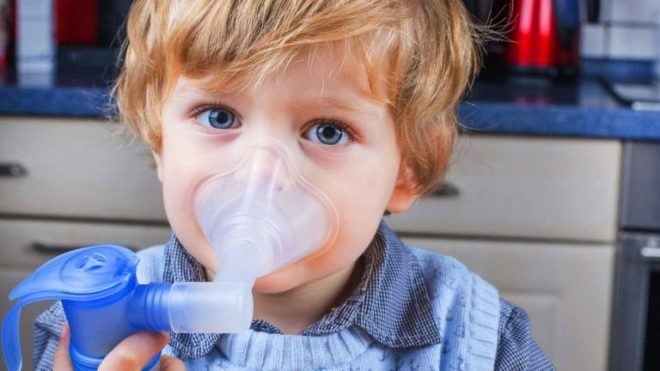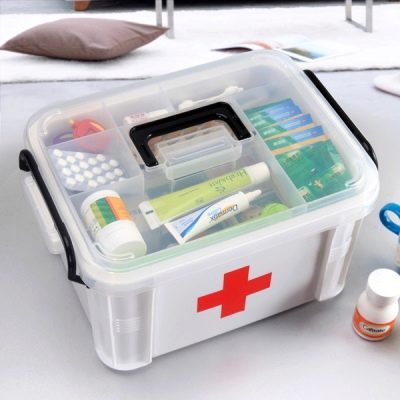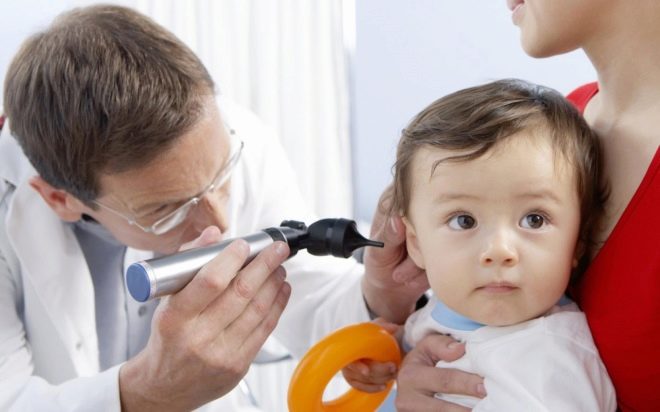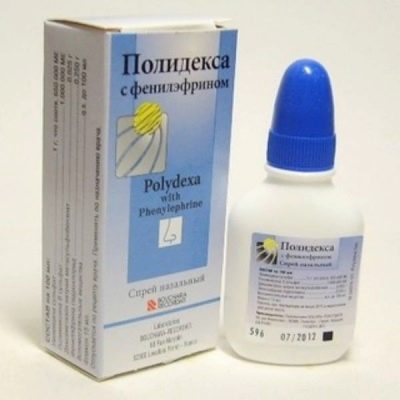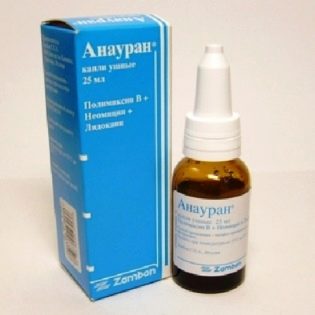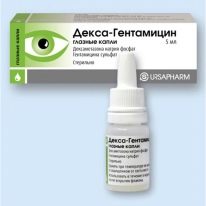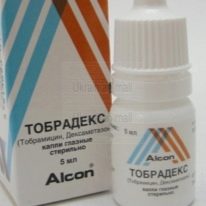Sofradex for children: instructions for use
"Sofradex" is considered one of the effective remedies for otitis, conjunctivitis, blepharitis and many other diseases. Is it prescribed to children and in what doses is used in childhood?
Release form
The drug is represented by drops, which are both eye and ear. According to its physical properties, "Sofradex" is a clear solution with a peculiar odor. It is almost colorless and placed in a 5 ml glass bottle. A transparent plastic dropper cap is attached to the bottle.
Composition
The action of Sofradex is provided with three ingredients at once:
- dexamethasone (this substance is present in drops in the form of sodium metasulfobenzoate at a dosage of 500 µg / 1 ml);
- framycetin sulfate (this component is contained in 1 ml of solution in an amount of 5 mg);
- gramicidin (the dose of such a substance in 1 ml of the drug is 50 μg).
Additionally, phenylethanol, lithium chloride and sterile water are added to the medicine. In addition, the solution includes ethyl alcohol, sodium citrate, polysorbate 80 and citric acid.
Operating principle
The influence of "Sofradex" on the human body due to its active ingredients.
- Framycetin is an antibiotic aminoglycoside, so it has a bactericidal effect on many bacteria, including staphylococcus, Proteus, E. coli and other microorganisms.
- Gramicidin also applies to antibacterial agents, but from the group of cyclic polypeptides. This ingredient has a high activity against staphylococcus and other microbes.
- Dexamethasone, as a glucocorticoid hormone, has a pronounced anti-inflammatory effect, that is, suppresses the inflammatory process. This substance has anti-allergic effect.
If the drug is used in the eyes, it helps get rid of tearing, burning, pain, photophobia. When used in the ear medication helps to relieve itching, redness, a feeling of congestion and other symptoms of inflammation.
Indications
The drug is prescribed for the defeat of the anterior eye bacteria. "Sofradex" drip when:
- blepharitis;
- keratitis (if the epithelium is not damaged);
- conjunctivitis;
- sclerite;
- iridocyclitis;
- episclerite;
- eczema of the eyelid skin (if it is infected).
This medicine is also in great demand in case of inflammation of the outer ear, and with otitis media this medication is recommended to drip into the nose.
Some ENT doctors prescribe "Sofradex" in the nose and with a prolonged rhinitis or sinus to prevent the occurrence of otitis media. In addition, the drops can be prescribed for adenoids.
From what age do they apply?
In the annotation to the drops indicated that the drug should not be used in infants, and for young patients the drug is prescribed with caution. Without the supervision of a physician, you cannot take Sofradex to young children.
Contraindications
The drug is not used:
- with intolerance to any of the active or auxiliary components;
- with glaucoma;
- fungal eye disease;
- viral infection of the eye;
- if the sclera is thinning or corneal damage;
- with herpetic keratitis;
- with eye tuberculosis, as well as with trachoma;
- with damage to the drum septum.
Side effects
Some children after instillation of "Sofradex" show an allergic reaction to its ingredients, for example, burning, dermatitis or itching. If you use the drug in the eye for a very long time, an increase in intraocular pressure, blurred vision, thinning of the cornea and other negative effects are possible. In addition, due to the long-term treatment with Sofradex, a secondary fungal infection can develop.
Instructions for use
For children with eye disease, the drug is injected in the conjunctival sac in 1 or 2 drops, and the treatment regimen depends on the severity of the infection. If the disease is easy, then the drops are used with an interval of 4 hours. If the infection is severe, then it is possible to dig in Sofradex every hour. As soon as the inflammation begins to decrease, the frequency of using drops is reduced.
If the medication is prescribed for ear inflammation, a single dosage will be 2-3 drops. The drug is administered 3 or 4 times a day. It can not only drip directly into the ear canal, but also applied to a swab made of gauze, which is inserted into the ear.
If "Sofradex" is discharged with sinus or rhinitis, it is dropped into each nasal passage 2-5 drops three times a day (they can be prescribed four times). Sometimes the doctor advises to dissolve drops of saline, and then drip into the child's nose.
In the treatment of adenoids, a special scheme is used, which is selected by the attending physician. To eliminate adenoiditis, the drug can be dripped or inhaled with diluted product (using a nebulizer, distilled water and proportions 1: 3 or 1: 4).
The duration of the application of "Sofradex" for a particular disease should be determined by the doctor. In this case, the drug is usually not used for longer than one week, so as not to provoke side effects.
Overdose
An excessively high dose of the drug can cause negative systemic effects, as well as a negative effect on the kidneys and the inner ear. If a child accidentally drinks the contents of the bottle, serious side effects will not appear.
Interaction with other medicines
"Sofradex" can not be used with other antibacterial agents that have ototoxic or nephrotoxic effects (for example, gentamicin), since this will increase the risk of side effects.
Terms of sale
To purchase Sofradex at a pharmacy, you need a prescription from a doctor. The average cost of one bottle of drops is 300 rubles.
Storage
Keep the sealed medicine at home is advised at a temperature below +25 degrees in the reach of children. The shelf life of Sofradex is 2 years. The opened preparation can be stored no longer than 1 month.
Reviews
According to many mothers and ENT doctors, Sofradex is an affordable and effective remedy for barley, conjunctivitis, otitis externa, and many other diseases. He noted the rapid anti-inflammatory effect, due to which the condition of the sick child soon improves. However, in some cases the medication does not help (for example, if the treatment is not started on time), which causes the appearance of negative feedback. Also, sometimes there are complaints about the appearance of side effects and a small shelf life.
Analogs
One of the most popular analogues of "Sofradex" can be called the drug «Polydex». It can be used for diseases of the ears, and dripping in the nose, but comes in two different forms. The drug, which is dripped into the nose, additionally contains a vasoconstrictor component, which is noted in its name ("Polydex" with phenylephrine).
The basis of "Polydex" also stands dexamethasone and two antibacterial drugs. Antibiotics in such drops belong to the same groups as the ingredients of Sofradex, however, instead of framycetin, Polydex contains neomycin, and gramicidin is replaced by polymyxin B. But since they act in a similar way, Polydex can also be used for those testimonies when they write out Sofradex.
The drug in the form of ear drops are prescribed at any age, and "Polydex" with phenylephrine, which is a nasal spray, is allowed for children over 2 and a half years old. Both drugs are prescription drugs, the average price of drops in the ears is 240 rubles.
In case of ear diseases, the replacement of Sofradex can also be the following:
The first drops include 2 antibacterial substances, but they do not contain dexamethasone. But there is lidocaine, so the drug helps to quickly eliminate severe pain in the ear. The medication is dripped to patients older than a year. The second tool contains only one antibiotic (rifamycin), but can be used not only for external otitis, but for more severe inflammation, including in patients with damage to the tympanic septum. This medicine is prescribed at any age.
If you need to replace "Sofradex" in case of eye diseases, the doctor may advise other drugs.
- «Dex gentamicin». Such drops contain dexamethasone supplemented with gentamicin antibiotic. Although the contraindications marked the children's age, the doctor may prescribe them to the child if the need arises. The drug is also available in the form of an eye ointment.
- «Tobradex». These eye drops work through a combination of dexamethasone and the aminoglycoside antibiotic tobramycin. In children, they are used in patients older than 1 year.
- "Garazon". This drug is represented by drops, which, like "Sofradex", can be dripped into the ears and eyes. It includes gentamicin and glutacorticoid betamethasone. Children are discharged from the age of 8.
How to treat otitis media in children, see the following video.
